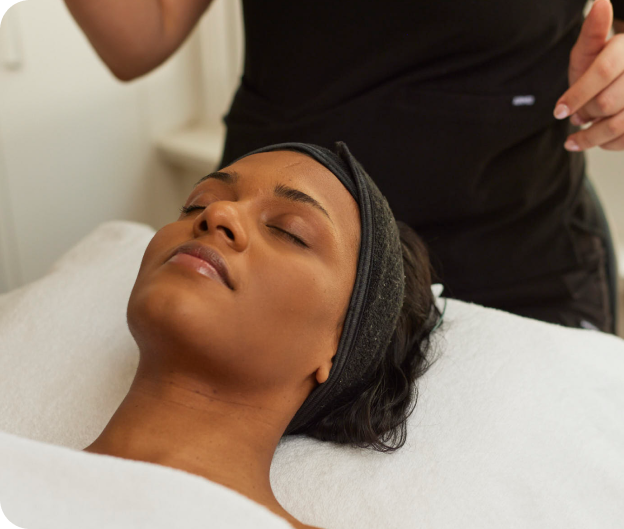We all know that the suns Ultraviolet (UV) rays are damaging to our skin, so why do we use UV therapy to treat certain skin conditions and how does it differ to sun exposure? In this blog we will dive into the difference between UVB therapy and general sun exposure, and the conditions we recommend this for.

What is UV?
UV stands for ultraviolet light waves, of which there are 3 types: UVA, UVB and the less commonly known UVC.
UVA can penetrate right down to the dermis of our skin (the very lower layers!) and make up 95% of the sun's rays. These are associated with the main causes of ageing and are the leading factors in cellular damage. I like to remember this as UVA = UV Ageing!
UVB only reaches the top epidermal layers of the skin and makes up just 5% of sun rays. With unprotected or prolonged exposure on the skin, this light wavelength will cause burning. A good way to remember this is UVB = UV Burn!
UVC the last and almost forgotten UV wavelength. Luckily for us, this extremely damaging ray is blocked by our ozone layer and atmosphere, we are therefore (for now) protected from this.
How can we use UVB safely?
Unlike general sun exposure or solariums that emit both UVA and UVB rays, our UV Therapy only uses the UVB wavelength. The treatments are measured and monitored extremely carefully to keep exposure levels well below the threshold for any burning or cellular damage to occur. Our Dermatologists will prescribe a very low starting dose, which is measured in Joules and by time. These are then slowly incrementally increased, with the best results occurring with 3 x treatments per week every second day (eg. Monday, Wednesday and Friday).
How does it work?
It works by suppressing the immune system cells in the skin and therefore reduces inflammation, itchiness and flare ups of certain conditions.
Skin conditions UVB treats:
- Psoriasis
- Eczema
- Vitiligo
- Pruritus
- Atopic dermatitis

What to expect in a UVB Therapy treatment
Upon each visit a trained team member will operate the machine and ensure there are no issues from any prior visit. Goggles are supplied to protect the eye area as well as sunscreen, to apply after the treatment. The client then stands in a specially designed light cabinet that delivers narrowband Ultraviolet radiation (UVB).
After the treatment:
Some mild redness or skin flushing can be expected however will settle within 24 hours and is a good indication that the treatment is working. A slight tan may also develop over the course of multiple treatments. In conjunction with receiving UVB Therapy it is compulsory to be applying a SPF 50+ daily to both the face and body.
Recommended SPFs:
- We are Feel Good inc. SPF 50+ range
- La Roche Posay invisible fluid
- La Roch Posay anti-shine
- Kceutic SPF 50
Useful treatment information:
- An average of 18-25 treatments are required (subject to the condition and severity)
- 3 x treatments are needed weekly
- UVB treatment is fully covered by Medicare (providing the client is a Medicare recipient)
- Our UV Therapy locations: Melbourne, Wangaratta and Shepparton
If you feel that you may benefit from UVB Therapy and would like to discuss this further with one of our Dermatologists, please email a GP referral to referrals@skindepth.com.au or call our Melbourne medical team on (03) 9527 4209.
